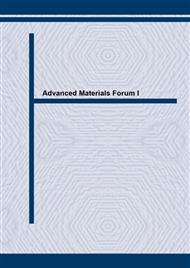[14]
.] 4.2. The use of Magnetic Fluid with RTM - Resin Transfer Moulding process The future of the magnetic nanofluides presence in the mass of the composite can be analyzed for potential applications in aeronautics or can be frequently used to promote the RTM process. [15.] The main objectives of the research are the speed up of production rates of RTM, plus the guarantee of complete filling and homogenization of the pre-forms and reduction in costs through increased reliability. Moreover, it is the intention of this research to study mechanisms of cure, which apply the potential of magneto fluid nano materials to the cure mechanisms of the resin. The use of magnetic fields to evaluate, through NDT, the quality of the products made by RTM, as well as to increase the potential applications of composite materials where magnetism is important (such as radar, magnetic levitation trains, kinetic energy accumulators and electric engine rotors), are amongst other objectives to pursue. A new RTM concept is envisaged where the combination of magneto fluid nano materials with Peristaltic motion will be used to reduce pressure and increase speed of filling. In the field of applications, one can imagine a situation where, through numerical modeling and as an answer to the requirements, it will be possible to apply a magnetic field, which, together with the Peristaltic motion, will adequate/orient the materials where they are needed. As health and safety objective, we can underline the search for new cure mechanisms avoiding the need for certain type of reactive monomers which can be dangerous for the persons working with this material, and also not environmental friendly. 5. Conclusions The enormous potential of nanocomposites has been identified. With imagination and heavy research work, it may be possible to use nanomagnetic fluids with the RTM process, enhancing its capabilities. Bibliography 1. Ishikawa, Toshihide; Nakayama, Atsuyoshi; Ishida, Tadashi - Intercalation complexes of clay minerals with fullerene and polymers as materials for electrodes for secondary lithium batteries 1997. -: http://www.patents.ibm.com/details?&pn=JP09132695A2 2. Serrano, Fernando; Beall, Gary W.; Cruz, Hannah - Water-insoluble oligomers or polymers adsorbed onto the external surface of exfoliated layered materials and nanocomposites –1998. http://www.patents.ibm.com/patlist?icnt=EP&patent_number=822163&x=25&y=10 3. Itada Mitsuyoshi – Gas barrier resin compodsition, multilayr structure and its production – 1998. http://www.patents.ibm.com/details?&pn=JP10231434A2 4. Suzuki, Noriyuki – Laminar inorganic substance containing resin film – 1999. http://www.patents.ibm.com/details?&pn=JP11071509A2 5. ALEXANDRE, Michael, DUBOIS, Philippe, JEROME, Robert, GARCIA-MARTI, Miguel, SUN, Tao, GARCES, Juan, M, MILLAR, Dean, M, KUPERMAN, Alex - Polyofelin naocomposites – 1999.http://www.patents.ibm.com/details?&pn=WO09947598A1 6. Barbee, Robert Boyd, Matayabs Cristopher, Jr., Trexler, Jack Wesley, Jr., Piner, Rodney Layne – Polymers nanocomposites with dispersed expanded cation-exchanged clay materialsfor high gas barier application – 1999. http://www.patents.ibm.com/details?pn=WO09932403A1 7. Suzuki, Noriyuki; Oohara, Youichi - Thermoplastic resin comps containing clay composite and mfg thereof with excellent mechanical properties, heat resistance, and molding – 1997. http://www.patents.ibm.com/details?&pn=WO09743343A1 8. Iijima S., Nature 354 (1991) 56. 9. Cecile NAUD, Giancarlo FAINI, Dominique MAILL, Hubert PASCARD – Quantum interference in carbon nanotubes – C. R. Acad. Sci. Paris, t . 327, Serie II b, pp.945-992
Google Scholar
[2000]
3803 – 3812. 11. H. Daniel WAGNER – Carbon Nanotube Composites for Tailored EM Radiation Shielding, see: www.aro.ncren.net/arowash/rt/a_1page 8.htm 12. A. M. Bonnot, M. Deldem, E. Beaugmon, T. Fournier, M.C. Schoulder, M. Mermoux – Crabon nanostructure and diamond rowth by HFCVD: role of the substate preparation ond synthesis condition – Diamond and Related Materials 8 (1999) 631-635. 13. V. Sofonea, L. Veckas, E. Hegedus - Magneto-Optical effects induced in a magnetic fluid layr by thermally released supermasive magnetic monopoles – Europhysics Letters 23 (1993), 604-614. 14. Ioan Anton, Ladislau Vekas – Magnatic Fluids a special category of nanomaterials – Proprety and Applilactions – Romanian Academy – Timisoara Branch Center for Fundamental and Advanced Technical Research, 2000. 15. A T Marques. N Crainic – Research concerning the behaviour of nanocomposites, how to obtain it, characteristics and ways of predicting, their properties – INEGI – CEMACOM – Report 1. INVOTAN - PROGRAMA DE COOPERACAO “OUTREACH”, 2001.
Google Scholar


